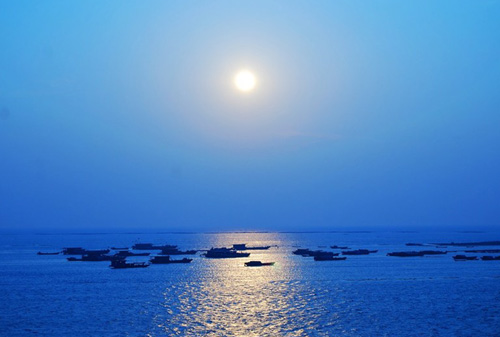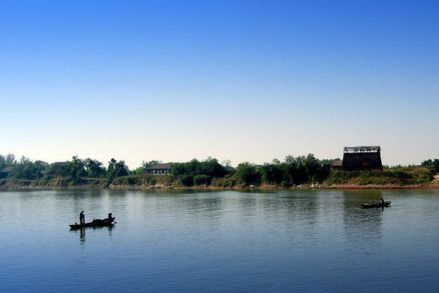
LAKE BOYANG IN JIANGXI PROVINCE
Lake Boyang is the largest fresh water lake in China. Being a discharging lake
of "swallow and spit" type, Lake Boyang's hydrological environmental
conditions vary greatly in different seasons, and thus the shape of the lake and
its environmental characteristics show a complicatedness.
Lake Boyang is located in northern Jiangxi Province to the south of the Changjiang River. It is a natural depression at the lowstreams of the five rivers: the Ganjiang River, the Fuhe River, the Xinhe River, the Raohe River, and the Xiushui River. It is a river-linked lake which was formed under the restriction of the Changjiang River and the five rivers mentioned above.
The total drainage area of the water system of Lake Boyang is 162 225km2, amounting
to about 97% of the total area under the jurisdiction of Jiangxi Province. Almost
all the surface runoffof the province flows into Lake Boyang through the Boyang
River and the Changhe River as well as the five rivers mentioned above, which
spread around the lake like a spoke, then flows into the Changjiang River through
the outlet of the lake after being regulated and stored
(see Fig. 2-1-1 ).
Because the whole drainage area of Lake Boyang is very large, this chapter
mainly discusses the natural and environmental characteristics of the lake region,
which includes Jiujiang City, Nanchang County, Xinjian County, Jinxian County,
Yugan County, Boyang County, Yongxiu County, Xingzi County, Duchang County,
and Hukou County, which have a total area of 19 760km2, accounting for 11.8%
of the total area of the province, and a population of 5.58 million, accounting,
for 16.33 of the provincial population, of which 83% is engaged in agriculture.
The lake region is a well known "land of fish and rice", which mainly
produces grain, cooking oil, cotton, and fish (see Fig. 2-1-2).
The region of Lake Boyang strides across the plains ef the middle and lower
reaches of the
Changjiang River and the southern part of the East China mountain hills. The
landform of the
region is lowlying and flat, surrounded by hills, except between Jiujiang and
Hukou where it
opens to the north. The region has various landforms, alternating with mountains,
hills,
mounds, and plains, forming rings and circles from the outskirts to the inside
and from high to
low, of which plains has an area of 12 635.95km2, taking up 32.6%, mounds 11
356.86 square kilometer, taking up 29.3%, water surface 2 480.68 square kilometer,
taking up 6.4%.